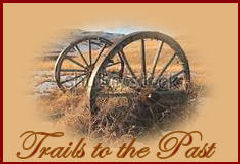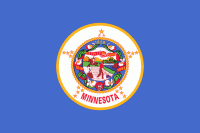|
Trails to the Past would appreciate any genealogy information that you may have such as news items, wills, deaths, births, biographies etc. if you have any of these items they can be emailed to Marie Miller the state of Minnesota Adminstrator
The
hardwood-forested hills in which Elk River is
situated were pushed up by the last glacier that
advanced across Minnesota. These hills are made up
of coarse materials which is the reason gravel
mining is so prevalent in Elk River, and also the
reason much of the area is not considered good
farmland.
To the south
of Elk River lies the prairie. This natural
boundary between the prairie and woods was also a
boundary between Indian nations. Two battles
between the Dakota and Ojibwe took place where the
Elk River meets the Mississippi in 1772 and
1773.
The Elk River
Water Tower was placed on the National Register of
Historic Places in 2012.
Zebulon Pike
passed through the area on his 1805 exploration of
the upper Mississippi River and named the Elk
River after the herds of elk he saw in the area.
David Frederic Faribault, son of French-Canadian
fur trader Jean-Baptiste Faribault built a trading
post near the conjunction of the Elk and
Mississippi Rivers in 1846, which he later sold,
in 1848, to French trader and guide Pierre
Bottineau. The trading post stood on a bluff just
east of the present day bridge across the Elk
River on main street. Bottineau also built a hotel
in 1850 on the bank of the Mississippi about a
half mile below the mouth of the Elk. The two
rivers and the Red River Trail, which passed
nearby, made this area a good location for
commerce.
A large
number of early settlers came from Maine and
nearly all of them were experts in lumbering. In
1851, Ard Godfrey, a native of Orono, Maine, saw
the potential of the water power of the Elk River
and built a dam and a sawmill. His dam created the
first lobe of Lake Orono (called the Mill Pond),
which extended from the present day dam to Orono
Cemetery Point. In 1855, the area by the dam was
platted and the town of Orono (known as Upper
Town) was created.
In the latter
half of the 19th century, agriculture and dairy
farming replaced lumber as the base of Elk River's
economy. Grist mills and a starch factory, which
took advantage of the potato fields to the west,
were built.
The Orono-Elk River area
continued to grow until by 1860 it had reached a
population of 723 people. These early settlers
typically came from New England. Elk River's
population continued to grow following a slow
period caused by the civil war. The majority of
people moving to Elk River by that time were from
Northern Europe.
The village of Elk River
was platted in 1865, replatted in 1868, and when
incorporated in the winter of 1880-1881, included
both Orono and Elk River. By 1870, Elk River
swelled to a population of 2,050 and became the
county seat in 1872. Around this same time, the
railroads replaced the rivers as the main focus of
transportation and the Lower Town (the present day
historic downtown area) replaced Upper Town as the
focus of commerce.
The Orono Dam was
destroyed by an ice storm in 1912, but hydropower
gave a new incentive to dam the Elk River in 1915.
This new dam created the four lobes of Lake Orono
as we know it today. In 1916, the Village of Elk
River received electricity for the first time. The
entire township of Elk River would not get
electricity until after World War II.
|
On Line
Data |
 |
 |
|
| |
Cities
Becker
Big
Lake
Clear Lake
Elk River (county
seat)
Princeton
St. Cloud
Zimmerman
Unincorporated
communities
Bailey
Briggs
Lake
Cable
Orrock
Salida
Santiago |
Townships
Baldwin
Township
Becker Township
Big Lake
Township
Blue Hill Township
Clear Lake
Township
Haven Township
Livonia
Township
Orrock Township
Palmer
Township
Santiago
Township
|
The information
on Trails to the Past © Copyright may be used in personal family history research, with source citation. The pages in entirety may not be duplicated for publication in any fashion without the permission of the owner. Commercial use of any material on this site is not permitted. Please respect the wishes of those who have contributed their time and efforts to make this free site possible.~Thank you! |



